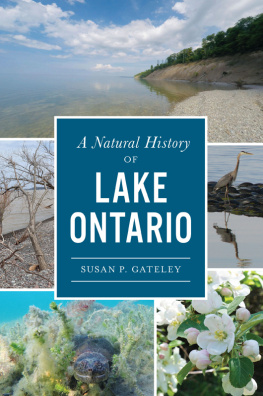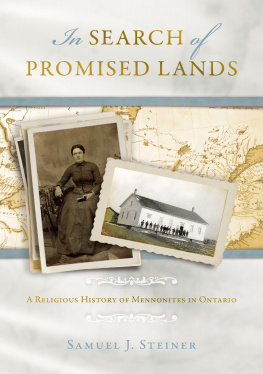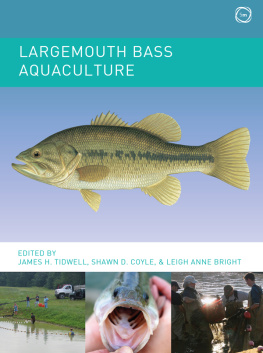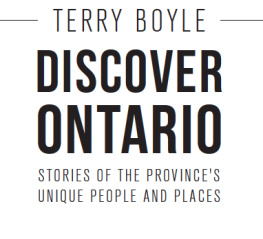HISTORY OF
FARMING IN
ONTARIO
BY
C. C. JAMES
REPRINTED FROM
CANADA AND ITS PROVINCES
A HISTORY OF THE CANADIAN PEOPLE
AND THEIR INSTITUTIONS
BY ONE HUNDRED ASSOCIATES
EDITED BY
ADAM SHORTT AND A. G. DOUGHTY
HISTORY OF FARMING
IN ONTARIO
BY
C. C. JAMES
C.M.G.
TORONTO
GLASGOW, BROOK & COMPANY
1914
This Volume consists of a Reprint, for
private circulation only, of the One Hundred
and Sixteenth Signed Contribution
contained in Canada and its Provinces ,
a History of the Canadian People and their
Institutions by One Hundred Associates.
Adam Shortt and Arthur G. Doughty,
General Editors
HISTORY OF FARMING
The Land and the People
From the most southern point of Ontario on Lake Erie, near the 42nd parallel of latitude, to Moose Factory on James Bay, the distance is about 750 miles. From the eastern boundary on the Ottawa and St Lawrence Rivers to Kenora at the Manitoba boundary, the distance is about 1000 miles. The area lying within these extremes is about 220,000 square miles. In 1912 a northern addition of over 100,000 square miles was made to the surface area of the province, but it is doubtful whether the agricultural lands will thereby be increased. Of this large area about 25,000,000 acres are occupied and assessed, including farm lands and town and city sites. It will be seen, therefore, that only a small fraction of the province has, as yet, been occupied. Practically all the occupied area lies south of a line drawn through Montreal, Ottawa, and Sault Ste Marie, and it forms part of the great productive zone of the continent.
The next point to be noted is the irregularity of the boundary-line, the greater portion of which is waterLakes Superior, Huron, Erie, Ontario, the St Lawrence River, the Ottawa River, James Bay, and Hudson Bay. The modifying effect of great bodies of water must be considered in studying the agricultural possibilities of Ontario.
Across this great area of irregular outline there passes a branch of the Archan rocks running in a north-western direction and forming a watershed, which turns some of the streams to Hudson Bay and the others to the St Lawrence system. An undulating surface has resulted, more or less filled with lakes, and almost lavishly supplied with streams, which are of prime importance for agricultural life and of incalculable value for commercial purposes. To these old rocks which form the backbone of the province may be traced the origin of the large stretches of rich soil with which the province abounds.
An examination of the map, and even a limited knowledge of the geological history of the province, will lead to the conclusion that in Ontario there must be a wide range in the nature and composition of the soils and a great variety in the climatic conditions. These conditions exist, and they result in a varied natural production. In the extreme south-western section plants of a semi-tropical nature were to be found in the early days in luxurious growth; while in the extreme north, spruce, somewhat stunted in size and toughened in fibre, are still to be found in vast forests.
It is with the southern section, that lying south of the Laurentian rocks, that our story is mainly concerned, for the occupation and exploitation of the northland is a matter only of recent date. Nature provided conditions for a diversified agriculture. It is to such a land that for over a hundred years people of different nationalities, with their varied trainings and inclinations, have been coming to make their homes. We may expect, therefore, to find a great diversity in the agricultural growth of various sections, due partly to the variety of natural conditions and partly to the varied agricultural training of the settlers in their homelands.
Early Settlement, 1783-1816
Originally this province was covered with forest, varied and extensive, and was valued only for its game. The hunter and trapper was the pioneer. To protect and assist him, fortified posts were constructed at commanding points along the great waterways. In the immediate vicinity of these posts agriculture, crude in its nature and restricted in its area, had its beginning.
It was into this wooded wilderness that the United Empire Loyalists, numbering in all approximately ten thousand people, came in the latter part of the eighteenth century. They were a people of varied originsHighland Scottish, German, Dutch, Irish Palatine, French Huguenot, English. Most of them had lived on farms in New York State, and therefore brought with them some knowledge and experience that stood them in good stead in their arduous work of making new homes in a land that was heavily wooded. In the year 1783 prospectors were sent into Western Quebec, the region lying west of the Ottawa River, and selections were made for them in four districtsalong the St Lawrence, opposite Fort Oswegatchie; around the Bay of Quinte, above Fort Cataraqui; in the Niagara peninsula, opposite Fort Niagara; and in the south-western section, within reach of Fort Detroit. Two reasons determined these locations; first, the necessity of being located on the water-front, as lake and river were the only highways available; and, secondly, the advisability of being within the protection of a fortified post. The dependence of the settlers upon the military will be realized when we remember that they had neither implements nor seed grain. In fact, they were dependent at first upon the government stores for their food. It is difficult at the present time to realize the hardships and appreciate the conditions under which these United Empire Loyalist settlers began life in the forest of 1784.
Having been assigned their lots and supplied with a few implements, they began their work of making small clearings and the erection of rude log-houses and barns. Among the stumps they sowed the small quantities of wheat, oats, and potatoes that were furnished from the government stores. Cattle were for many years few in number, and the settler, to supply his family with food and clothing, was compelled to add hunting and trapping to his occupation of felling the trees.
Gradually the clearings became larger and the area sown increased in size. The trails were improved and took on the semblance of roads, but the waterways continued to be the principal avenues of communication. In each of the four districts the government erected mills to grind the grain for the settlers. These were known as the King's Mills. Water-power mills were located near Kingston, at Gananoque, at Napanee, and on the Niagara River. The mill on the Detroit was run by wind power. An important event in the early years was when the head of the family set out for the mill with his bag of wheat on his back or in his canoe, and returned in two or three days, perhaps in a week, with a small supply of flour. In the early days there was no wheat for export. The question then may be asked, was there anything to market? Yes; as the development went on, the settlers found a market for two surplus products, timber and potash. The larger pine trees were hewn into timber and floated down the streams to some convenient point where they were collected into rafts, which were taken down the St Lawrence to Montreal and Quebec. Black salt or crude potash was obtained by concentrating the ashes that resulted from burning the brush and trees that were not suitable for timber.












